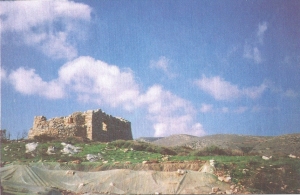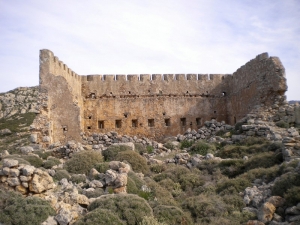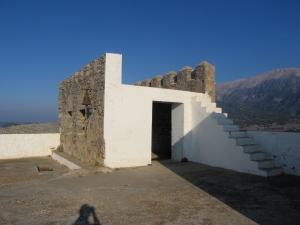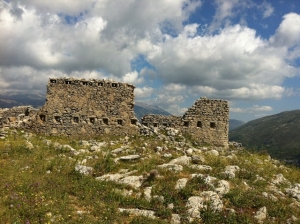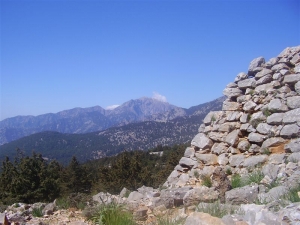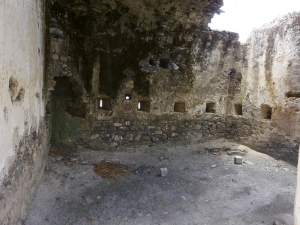In the Province of Selino (the wider area of Paleochora), in Sougia Koyles were built in the positions Boukelasi, Koustogerako, Kefala in Rodovani (ancient Elyros), Stavros near Kantanos, Moustakos, Spaniako and Vigles. The Koules of Spaniako controlled the valleys, the passages and the towering peaks around it, while on the south lies the Libyan Sea.
The Koules of Spaniakos controlled the valleys, the passages and the towering peaks around it, while on the south lies the Libyan Sea. It had a very important role in the suppression of the revolution of 1866-1869.
Here we meet the remnants of a small Koules (Turkish fort) that had visual contact with the koules of Agios Ioannis and Loutro. Almost nothing survives from the fort, apart from some wall foundations. Also, there are modern water cisterns, apparently built with material of the fortress.
Besides the two Koules of Askyfou, several other Koules had been constructed in the present province of Sfakia in order to suppress the revolutions of the Sfakians.
Here we meet one of the many koules (Turkish forts) that were built by the Turks in Selino district so as to control the surrounding slopes and valleys.
One of the many defensive towers (koule) built by the Turks at the strategic places that controlled the passages between the different regions of Crete and was the Koule of Meronas, next to the current church dedicated to Prophet Elijah. The point has panoramic views to the valleys of Amari and Potami. The Koule survives in bad condition.
The Koules of St. John still stands deserted, while the visitor still sees the cisterns for storing water. The place can be accessed via a trail crossing the beautiful landscape with cypress trees and the views of the Libyan Sea.
At the small valley of Kamares - Grigoria - Magarikari were the Koules of Grammeni and the Koules of Kremastos. The first was built between Grigoria and Magarikari, next to the current road. It is in good condition, with almost all of its roof surviving.











